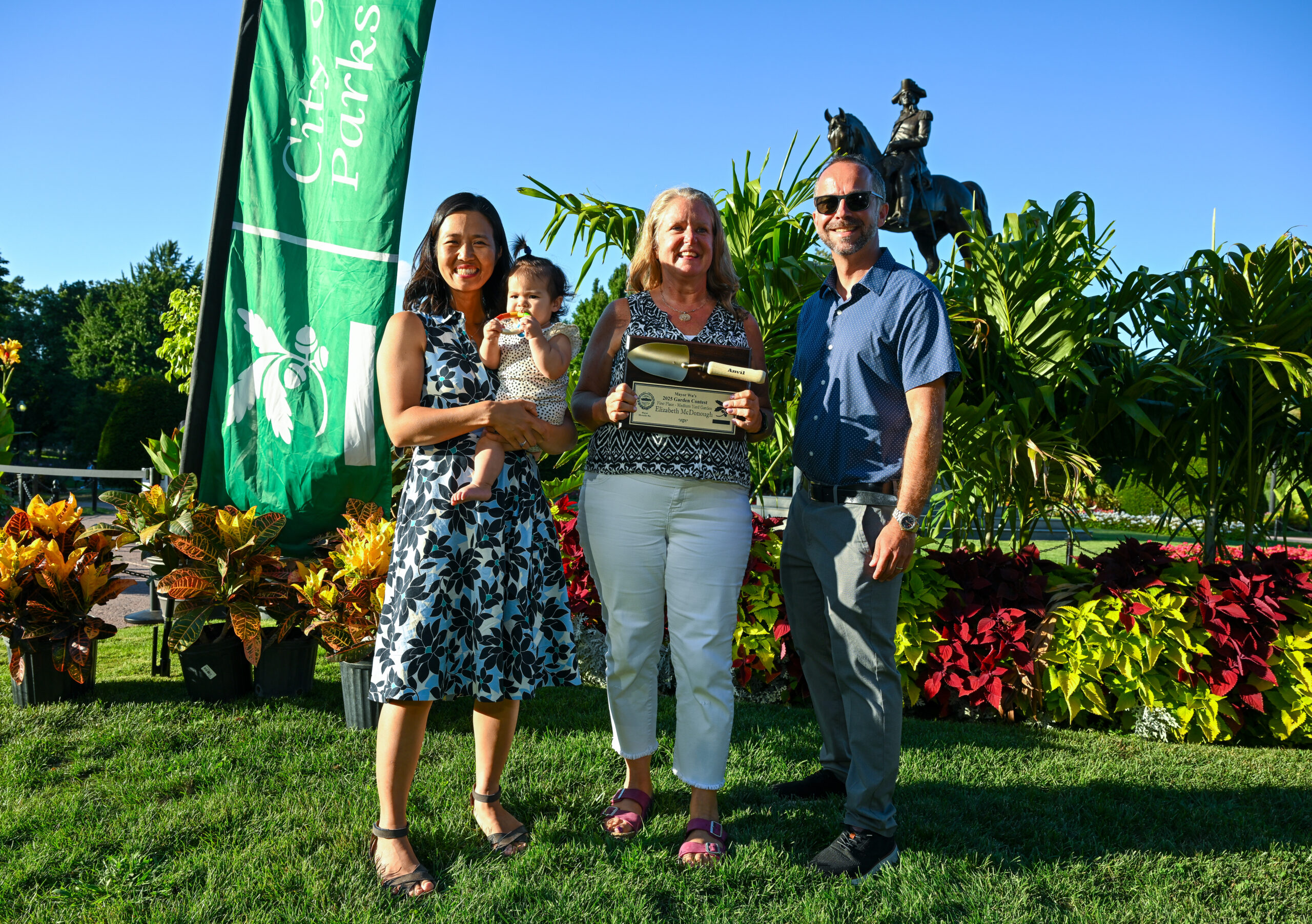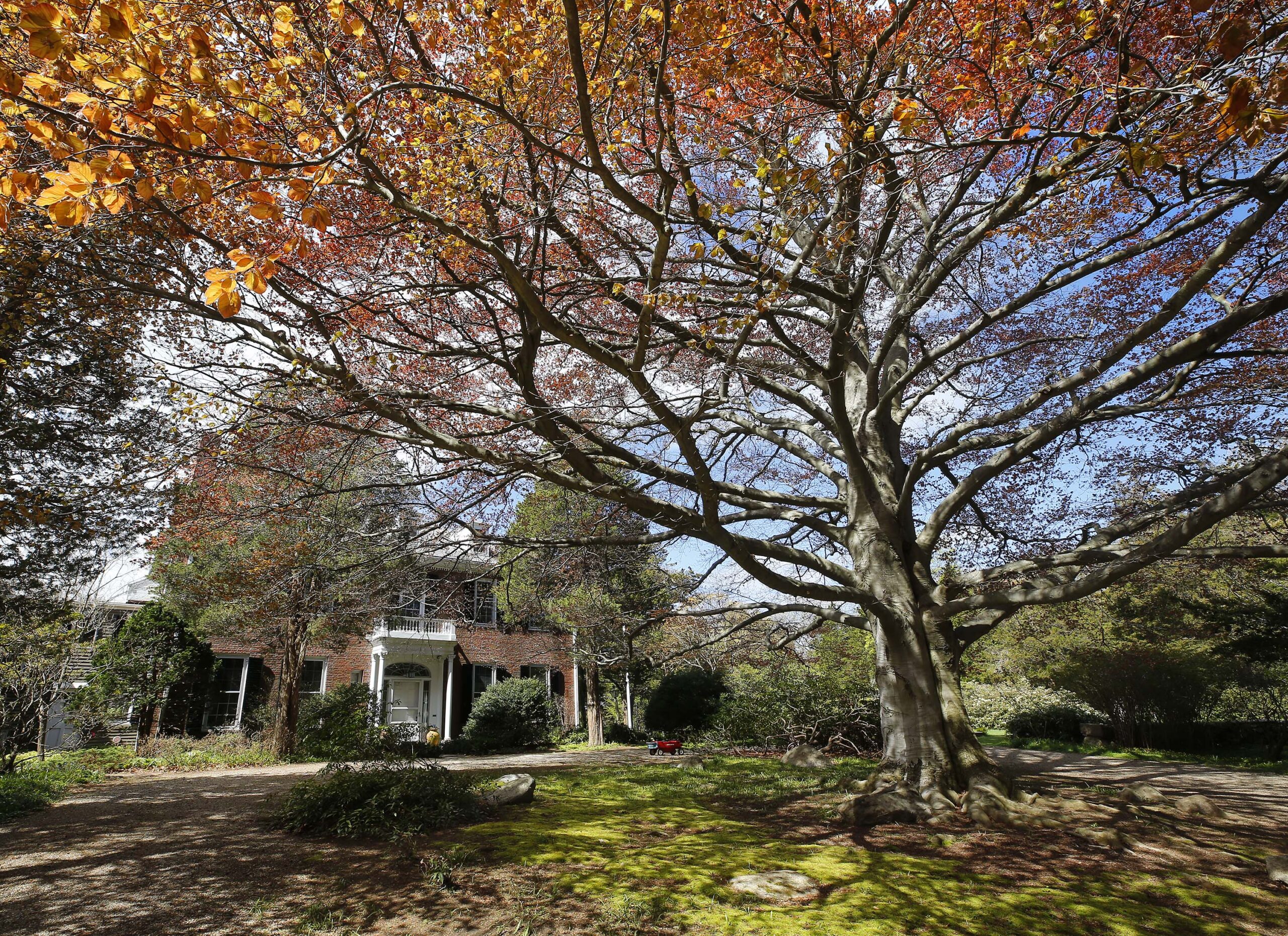
As you are shopping for seeds and plants this spring, “consider the role your gardens can play to support our local pollinators and maintain healthy populations of food and nectar for them,” says Kristin McCullin, Horticulturist at Allen C. Haskell Public Gardens in New Bedford. “Without pollination, most plants can’t make fruit and seeds, and pollinators could really use a little help from us gardeners these days.”
Planting for pollinators is essential to maintaining populations of our insect friends, who need flower-rich forage, host plants or nest sites to lay their eggs, and an environment free from pesticides. Creating additional habitat, made up of a diversity and abundance of plants that provide pollen and nectar, is something we can all do to slow or reverse population declines.
Whether you’re a novice or experienced gardener, here are some important tips to keep in mind—provided by McCullin, as well as Andrew Lawson, Field Crop Manager at Appleton Farms, and Jordan Takvorian, Stewardship Manager for the 56 Trustees Community Gardens throughout Boston.
SITE SELECTION: The best pollinator habitats have good sun exposure, full sun at least part of the day, and soil with good fertility and drainage. You can prepare the site by smothering existing vegetation with cardboard or a tarp or removing sod or existing vegetation by hand and turning the soil with a shovel or rototiller. If you’re planning ahead for next year, another trick is to solarize the site with plastic for many months prior to planting. Either way, be sure to mix in rich compost if the soil is poor.
PLANT MAINTENANCE: Water new planting routinely in the absence of rain and put down mulch around plants to help control weeds. There’s no better tool than your own hands to control weeds, especially around transplants. In the fall, be sure to leave at least some of the leaf litter where it’s fallen, since butterflies and moths that lay eggs on leaves will emerge next spring from leaf litter and other beneficial insects overwinter there. There’s also potential for breeding habitat to be formed by small, exposed patches of sand and mud, creating new homes for ground nesting bees.
PLANT LAYOUT AND SELECTION: Group your plants in single species clusters of at least 3-ft in diameter and keep plant diversity in mind. Be sure to include a variety of plants with different flower sizes, shapes, and colors, and plants of varying heights and growth habits—this will support a wider diversity of pollinators. As few as ten carefully chosen species provides a good foundation for pollinator habitat.
BLOOM SUCCESSION: Consider the bloom timing of your plants, which will provide a continuous food supply for pollinators. Choose at least three pollinator plants from each of the three bloom periods: spring, summer, and fall. It’s especially important to have plants that bloom in both the early spring and late fall, as these plants provide forage at critical times for pollinators. Native grasses are also a terrific addition to your pollinator area, providing habitat for butterflies and potential nesting sites for bumble bees.
These tips apply to any size garden in any location, from large rural plots to backyard gardens in the suburbs, or even in the middle of a city. “Green spaces, large or small, provide much needed pollinator habitat in otherwise built-up urban environments,” says Takvorian. “Incorporating native plants in the urban landscape provides nectar and pollen to local populations and serves as steppingstones to larger viable habitat for those species that are migrating through.”
No matter what space you have available or your skill level, you can easily do your part to help pollinators do their crucial work by following these handy guidelines. And if you’re interested in learning more, there are many online resources—for example, the Massachusetts Department of Agricultural Resources has loads of great information, tips, and tools.
The following native herbaceous pollinator plants are just a few good options to include in your garden:
SPRING: Golden Alexander (Zizia aurea), Common Spiderwort (Tradescantia virginiana), Wild Geranium (Geranium maculatum), Wild Ginger (Asarum canadense)
SUMMER: Smooth Penstemon (Penstemon digitalis), Wild Bergamot (Monarda fistulosa), Purple Giant Hyssop (Agastashe scrophulariifolia), Butterfly Milkweed (Asclepias tuberosa), Joe-Pye Weed (Eupatorium fistulosum), Mountain Mint (Pycnanthemum muticum)
FALL: New England Aster (Symphyotrichum novae-angliae), New York Aster (Symphyotrichum novi-belgii), Canada Goldenrod (Solidago canadensis)
TREES/SHRUBS: American Basswood (Tilia americana), Common Serviceberry (Amelanchier arborea), Highbush Blueberry (Vaccinium corymbosum) When it comes to ornamental plants for pollinator gardens, look for members of the mint, aster, and rose families (perennial and annual). Most are commonly available at garden centers, including:
PERENNIALS: Catmint (Nepeta), Coneflower (Echinacea), Lavender (Lavendula), Oregano (Origanum), Russian Sage (Perovskia atriplicifolia)
ANNUALS: Borage (Borago officinalis), Sunflower (Helianthus annuus), Cosmos (Cosmos bipinnatus)
SHRUBS: Rugosa Rose (Rosa rugosa), Pussy Willow (Salix discolor), False Indigo (Amorpha fruticosa)
GRASSES: Big Bluestem (Andropogon gerardii), Little Bluestem (Schizachyrium scoparium)
Editor’s Note: This article originally appeared in the Spring 2023 issue of Special Places, under the title Flower Power.



